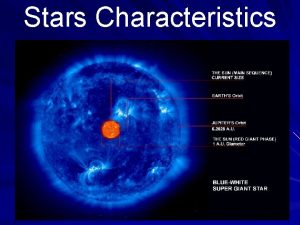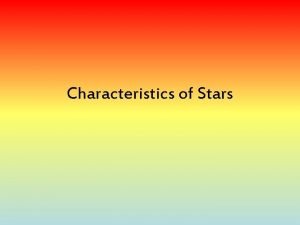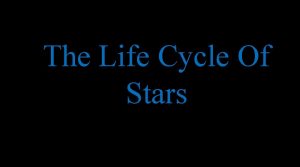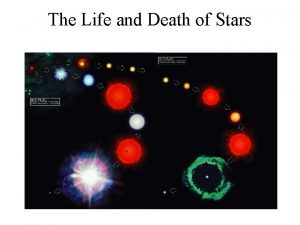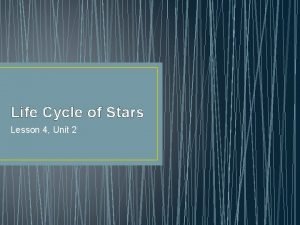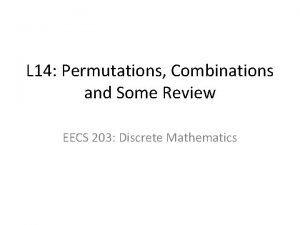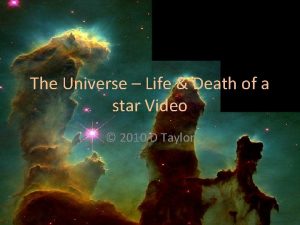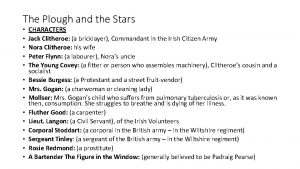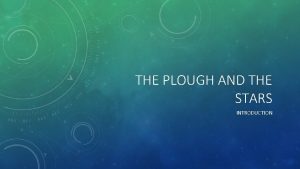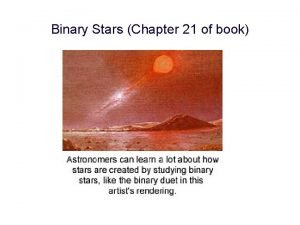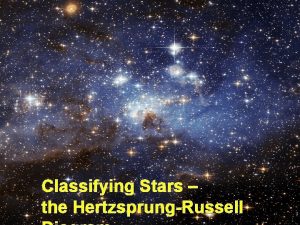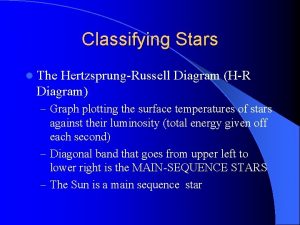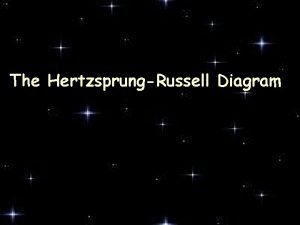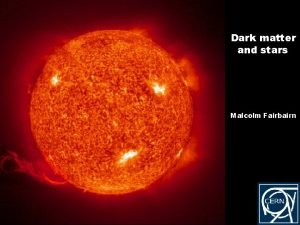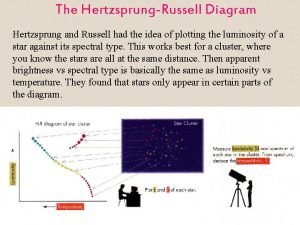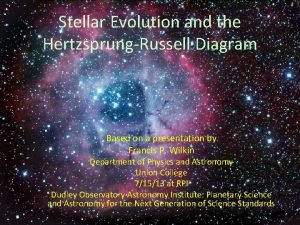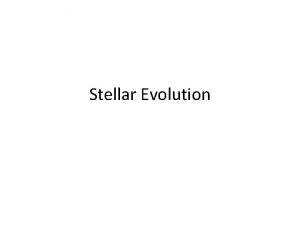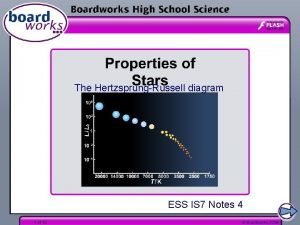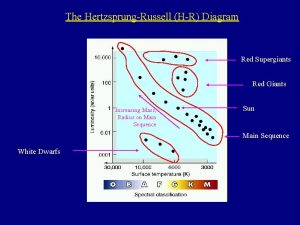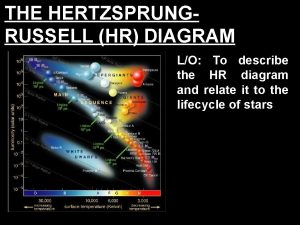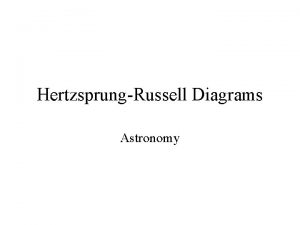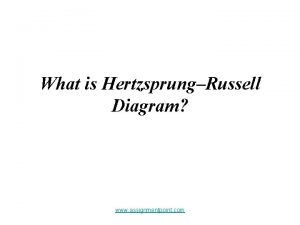The HertzsprungRussell diagram and the nature of stars




















- Slides: 20

The Hertzsprung-Russell diagram and the nature of stars

The Hertzsprung-Russell Diagram Hertzsprung and Russell had the idea of plotting the luminosity of a star against its spectral type. This works best for a cluster, where you know the stars are all at the same distance. Then apparent brightness vs spectral type is basically the same as luminosity vs temperature. They found that stars only appear in certain parts of the diagram.



With information provided by spectroscopy, we can search for correlations between stellar properties

What the data show: the Hertzsprung. Russell Diagram Highest quality data from the Hipparchus spacecraft

The Sun is here The Sun is generically related to most

Filling out the Hertzsprung-Russell diagram

The Hertzsprung-Russell Diagram and the Types of Stars • • • Types of stars, important terms Main Sequence (luminosity class V) Giants (luminosity class III) Supergiants (luminosity class I) White dwarfs What does it all mean?

The Hertzsprung-Russell Diagram

Basics of the HR diagram Size Mass Red dwarfs

Hertzsprung. Russell Diagram Since there appears to be a strong correlation between luminosity and color (temperature), we put all the stars on a Luminosity – Temperature plot, and this is what it looks like: Properties of Stars shown in the H-R Diagram: 1. Luminosity (log scale). 2. Temperature and spectral type 3. Size 4. Mass of the main sequence 5. Lifetime Sizes scale 1 Rsun 1000 Rsun

Hertzsprung. Russell Diagram Notice that… • Temperature scale decreases from left to right. • The scale of luminosity is in power of 10 (log scale). • Mass increases from lower right to upper left • Size increases from lower left to upper right. Sizes scale 1 Rsun 1000 Rsun

Classification of Stars in H-R Diagram 1. The Main Sequence stars • healthy stars, fusing hydrogen in the core. • High-mass, highluminosity, hightemperature, and shortlived stars on the upper -left-hand corner • Low-mass, lowluminosity, lowtemperature, and longlived stars on the lower -right-hand corner Sizes scale 1 Rsun 1000 Rsun

Classification of Stars in H-R Diagram 2. The Supergiants, 3. The Giants, • Supergiants and giants are dying stars, fusing helium and heavier elements. 4. The White Dwarfs. • dead stars, exposed core of dead mainsequence stars. Sizes scale 1 Rsun 1000 Rsun

The Mass-Luminosity Diagram Main sequence stars The payoff: we can decode the HR diagram and learn that the main sequence is a mass sequence (and that off the main sequence things are more complicated).

HR Diagram - Properties Stars in different parts of the HR Diagram are in different phases of their life cycles. The Main Sequence is set by hydrogen fusion. Masses on the Main Sequence Stellar Sizes

Size/Luminosity Hot stars are very bright but very rare. They can affect the light, but not the mass of the Galaxy. Red giants are more common. Most common are red dwarfs. O 5 B 0 A 0

The Hertzsprung-Russell diagram is a plotting board for the nature and evolution of stars

Wein’s Law Ex. The light emitted by our sun is yellow light. It has a wavelength of 500 nm. What is the surface temperature of the sun according to Wein’s Law?
 Mary daniels is a student in england
Mary daniels is a student in england Hr diagram worksheet
Hr diagram worksheet Nature and nature's law lay hid in night meaning
Nature and nature's law lay hid in night meaning What are the characteristics of a star
What are the characteristics of a star Characteristics of stars diagram
Characteristics of stars diagram Determinace lidské psychiky
Determinace lidské psychiky Two stars and a wish template
Two stars and a wish template Small/medium star life cycle
Small/medium star life cycle The life and death of stars
The life and death of stars Waves produced by stars and galaxies
Waves produced by stars and galaxies Why did the german soldiers come to uncle henrik’s house?
Why did the german soldiers come to uncle henrik’s house? Stars with small and medium mass
Stars with small and medium mass Pascal's identity proof
Pascal's identity proof Two stars and a wish template
Two stars and a wish template Life and death of a star
Life and death of a star The plough and the stars characters
The plough and the stars characters Watching and seeing shooting stars on a dark night
Watching and seeing shooting stars on a dark night Why do disk stars bob up and down as they orbit the galaxy?
Why do disk stars bob up and down as they orbit the galaxy? The plough and the stars characters
The plough and the stars characters Hrt to hrt merrylands
Hrt to hrt merrylands Binary star book
Binary star book



